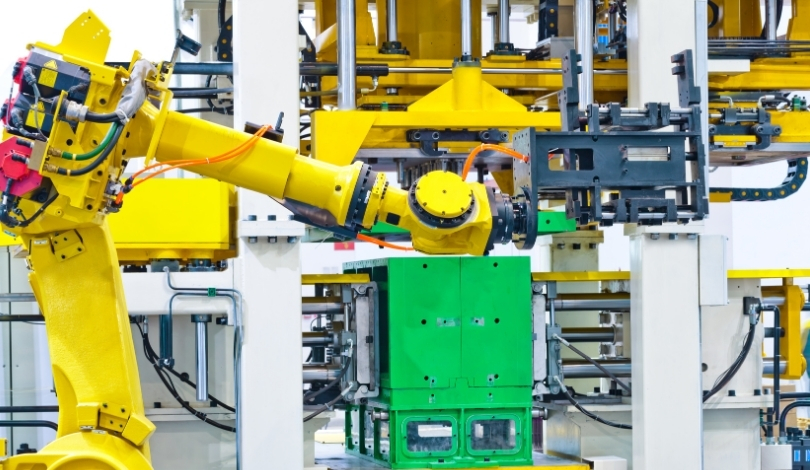As manufacturers worldwide grapple with increasing demand and persistent labor shortages, the adoption of industrial robots is emerging as a strategic response to improve operational efficiency and quality. Recent findings reveal that robotics remains at the forefront of manufacturers’ minds, with a significant portion transitioning from consideration to deployment. Industry leaders highlight the importance of integrating both traditional and new-generation collaborative robots, while the emergence of artificial intelligence in manufacturing technology continues to reshape production strategies. The fast pace of robotics deployment, alongside evolving sentiment toward AI-assisted manufacturing, underscores a broader shift in industrial priorities—where the focus is more on solving workforce gaps, optimizing processes, and achieving ROI rather than wholesale replacement of labor.
Earlier surveys and industry commentaries pointed to slower adoption rates and a cautious approach to AI in industrial settings, with manufacturers expressing hesitation due to complex implementation and unclear return on investment. Recent data suggests that the proportion of manufacturers actively exploring or deploying robots has grown, and there is more receptiveness toward advanced solutions using AI, such as predictive maintenance. Companies like ABB and NVIDIA were previously seen as niche leaders; now, their robot products and software platforms are increasingly viewed as foundational components in mainstream production environments. The shift from skepticism to pragmatic integration reflects greater familiarity and confidence in robotics and AI utility for manufacturing.
What is Driving Current Robotics Adoption?
A majority of manufacturers surveyed are at various stages in deploying industrial robots, with 53% considering new hardware and 28% already utilizing such systems within their facilities. Quality improvement emerges as a prominent driver, with 40% of manufacturers identifying robotics as a primary tool for elevating product standards, marking a notable increase from previous reports. Additionally, intentions to integrate collaborative or mobile robots are growing, with 33% open to adoption within the next five years.
How are Barriers Affecting Implementation?
While enthusiasm for robotics is strong, companies report significant challenges regarding expertise, time constraints, and the need for specialized skills to implement new technologies. Many manufacturers cite insufficient technical know-how and limited onboarding resources as primary obstacles to accelerating automation. Notably, apprehension about job displacement due to robots ranks low among concerns.
Are Manufacturers Ready for Advanced AI Solutions?
Manufacturers are showing interest in generative artificial intelligence, particularly for applications like predictive maintenance and production optimization. ABB’s YuMi, NVIDIA’s Isaac platform, Siemens, Dassault Systèmes, Visual Components, and Cenit are mentioned as having relevant software capabilities, especially for tasks like optimizing tool paths. Still, the distinction between AI as an information technology for planning and a real-time operational tool remains unclear for many respondents. As ABI Research analysts note, educating the market about AI-augmented robotics’ real capabilities is a critical step forward.
“There is a large disconnect here between the perceived capabilities of AI-augmented robots and the new products that innovators are bringing to market,” commented George Chowdhury, a robotics industry analyst, emphasizing the need for market education.
Current research suggests manufacturers are increasingly open to leveraging robots and AI to address quality and inefficiency issues, aided by solutions from recognized brands. However, a gap persists in understanding the specific value advanced AI, combined with robotics, can deliver on the shop floor. Overcoming barriers related to skills, time, and support will likely determine how quickly and successfully these technologies achieve broader adoption.
As manufacturers continue prioritizing robotics to address persistent challenges, clear communication and training about new technologies’ potential will play a pivotal role. Companies can benefit from partnerships with robotics suppliers like ABB and software leaders NVIDIA, Siemens, and Dassault Systèmes, who provide essential tools for implementation and optimization. Understanding both the promises and limitations of AI-integrated systems will help organizations set realistic expectations and maximize investment. Those able to bridge the knowledge gap, develop in-house expertise, and prioritize automation in their production strategies are more likely to see sustained improvements in output quality and operational resilience.
- Robotics adoption among manufacturers is rising, led by quality improvement goals.
- Knowledge and skills gaps remain key obstacles to wider deployment of automation.
- Clear understanding of AI-driven robotics’ capabilities is still developing.










